I used to be one of those people who'd push okra to the side of my plate. Those slimy little pods? No thanks! But everything changed when my Lola introduced me to Ginataang Okra. Something delicious happens when you cook okra in creamy coconut milk with tender pork and spicy chilies – that "slimy" texture transforms into this silky sauce that hugs every grain of rice perfectly.
This dish completely changed my mind about okra, and now it's one of my favorite comfort foods. If you think you don't like okra, this Filipino classic might just change your mind, too. It's simple to make, easy on the wallet, and absolutely packed with flavor.
Jump to:
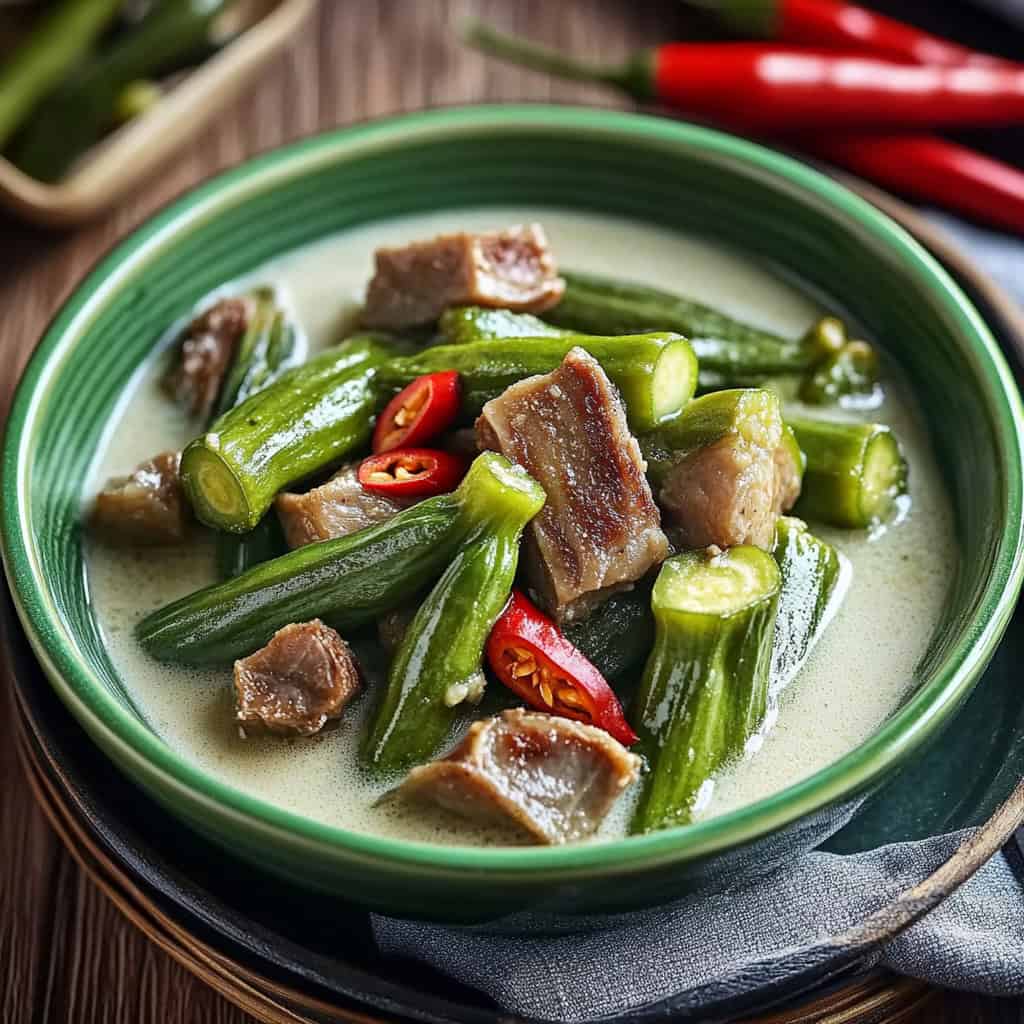
Why You'll Love This Recipe
- Perfect balance of creamy coconut milk and tender okra
- Budget-friendly yet packed with nutrition
- One-pot dish that's ready in under an hour
- Versatile recipe that works with different proteins
- Rich in fiber and vitamins from okra
- Authentic Filipino comfort food with a delightful combination of textures
Ingredients
The ingredients in Ginataang Okra create a harmonious blend of flavors and textures that define Filipino comfort food. Tender okra provides a natural thickening agent while absorbing the rich coconut milk, which forms the creamy base of the dish.
Pork jowl adds savory depth with its unique balance of meat and fat, while shrimp paste delivers that distinctive umami punch essential to Filipino cooking. The aromatic combination of garlic, onions, and two types of chilies creates layers of flavor — from gentle warmth to vibrant heat — that cut through the richness of the coconut.
Each ingredient serves a purpose: creating a dish that's simultaneously creamy, savory, spicy, and satisfying when served over steaming rice.
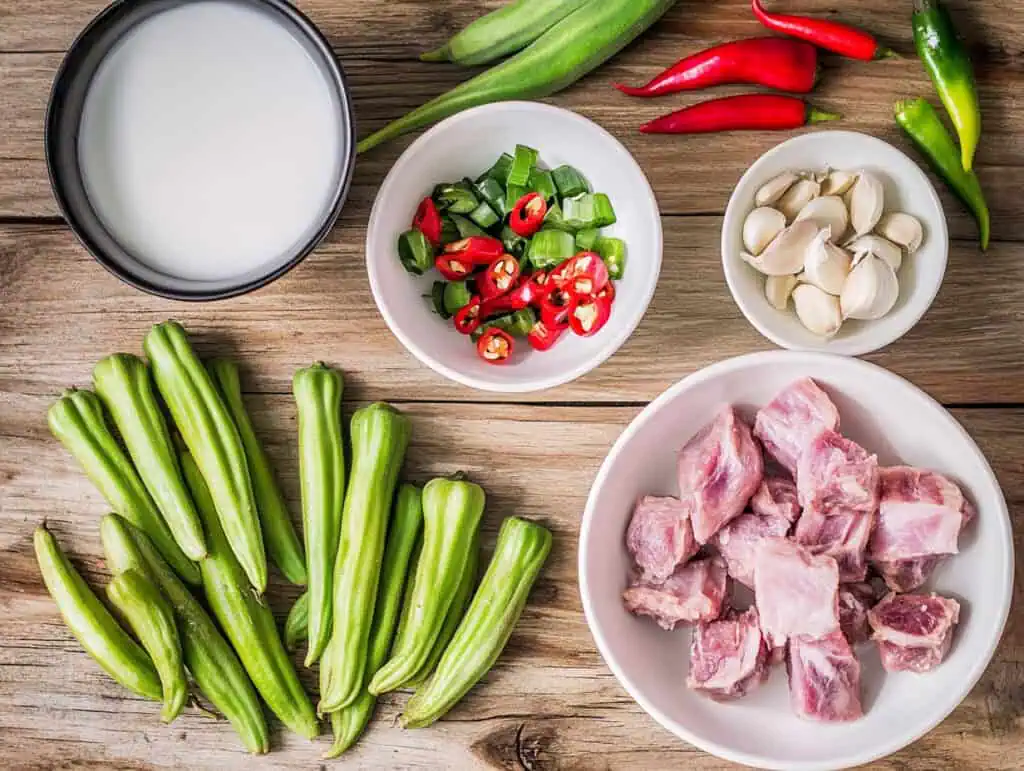
- 400g pork jowl, sliced into bite-sized pieces
- 400g fresh okra, cut diagonally
- 400ml coconut milk
- 1 cup water
- 1 tablespoon shrimp paste (bagoong alamang)
- 6 cloves garlic, minced
- 1 red onion, chopped
- Freshly ground black pepper to taste
- 5 finger chilies (siling haba), chopped
- 4 red chilies (siling labuyo), for garnish
- Salt to taste
- Cooking oil
Equipment
- Large Wok or Deep Pan: Essential for even heat distribution and proper sautéing of ingredients. The curved shape helps when stirring and combining the coconut milk with other ingredients.
- Sharp Knife: For precise cutting of okra, pork, and aromatics. A sharp knife ensures clean cuts and prevents crushing the vegetables.
- Wooden Spoon: Prevents scratching non-stick surfaces and allows for gentle stirring of the coconut milk mixture without breaking the okra.
- Measuring Cups and Spoons: For accurate measurements of ingredients, especially the liquids and spices.
- Cutting Board: Provides a stable surface for chopping ingredients safely and helps with organization during preparation.
- Lid: Essential for proper simmering and tenderizing the pork while maintaining moisture in the dish.
- Ladle: Helpful for serving the finished dish, especially with the rich coconut sauce.
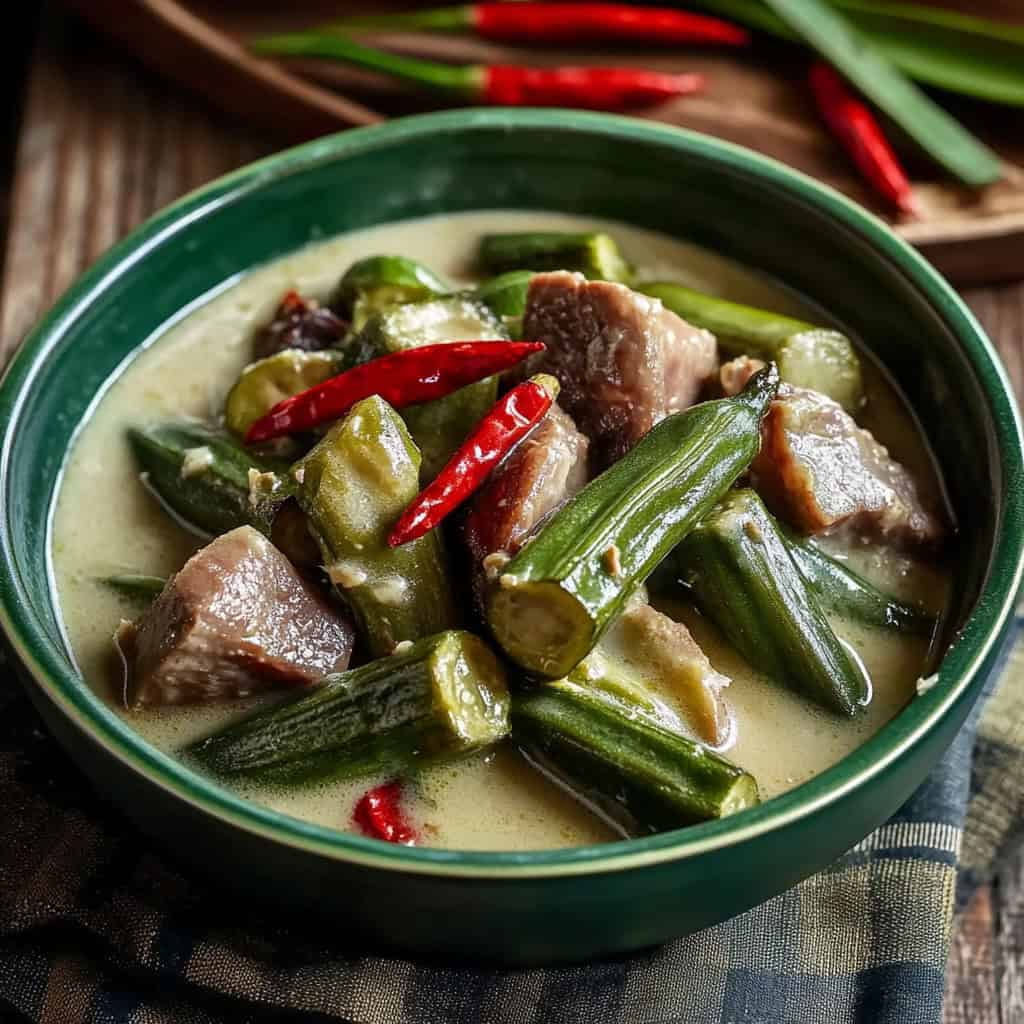
How To Make
- Season the pork jowl pieces generously with salt and black pepper. Heat oil in a wok or large pan over medium-high heat. Once hot, add the pork and brown it on all sides until golden, about 5-7 minutes.
- Push the browned pork to one side of the wok and add minced garlic and chopped onions to the empty space. Sauté until the garlic is fragrant and onions are translucent, about 2-3 minutes.
- Pour in 1 cup of water and bring everything to a boil. Once boiling, cover the wok, reduce heat to medium-low, and let the pork simmer for 15 minutes until it starts to become tender.
- After 15 minutes, add the coconut milk, shrimp paste (bagoong), finger chilies, and okra. Gently stir everything together and bring back to a gentle boil.
- Lower the heat to maintain a gentle simmer, cover the wok again, and cook for 8 more minutes until the okra is tender but still bright green and the pork is fully cooked.
- Taste the sauce and add more salt if needed, then give it a final sprinkle of black pepper. Transfer to a serving bowl and garnish with fresh red chilies. Serve hot with steamed rice.
- For best results, don't overcook the okra, it should be tender but still hold its shape. The sauce should be creamy and slightly thick from the okra's natural texture. If you want the sauce thicker, simmer uncovered for a few extra minutes.

Tips from Lola's Kitchen
- Select young, bright green okra with no dark spots for the freshest flavor and best texture
- The key to perfect Ginataang Okra is in the timing - don't overcook the okra as it will become too soft and lose its vibrant color
- Toast the shrimp paste in a separate pan before adding it to enhance its umami flavor
- Cut okra diagonally to expose more surface area, allowing it to absorb more flavor from the coconut milk
- If using freshly squeezed coconut milk, add the second extraction first, then finish with the first extraction in the last 5 minutes of cooking for maximum richness
- Allow the dish to rest for 5-10 minutes after cooking - this helps the flavors meld together beautifully
- When browning the pork, don't rush - properly caramelized meat adds significant depth to the final dish
Substitutions
- Pork jowl: Substitute with pork belly, chicken thighs, or shrimp for different protein options
- Fresh okra: Frozen okra works in a pinch, but reduce cooking time by 2 minutes
- Coconut milk: Use light coconut milk for a lower-fat version, or coconut cream diluted with water (2:1 ratio) for extra richness
- Shrimp paste: Fish sauce (patis) or salt can work, though the flavor profile will be different
- Finger chilies: Bell peppers can replace these for a milder version that's kid-friendly
- Red chilies: Green chilies or a dash of chili flakes are good alternatives
- For a vegetarian version: Replace pork with firm tofu or meaty mushrooms like oyster or king oyster varieties
Troubleshooting
- Sauce too thin: Simmer uncovered for an additional 5-10 minutes to reduce and thicken
- Pork still tough: Continue simmering with the lid on for 10-15 more minutes, adding a splash of water if needed
- Dish too spicy: Add an extra ¼ cup of coconut milk to temper the heat
- Too salty: Add a peeled, cubed potato to absorb excess salt, or dilute with unsalted coconut milk
- Okra too slimy: This is often from overcooking - next time, reduce cooking time by 2-3 minutes and keep okra slightly firm
- Coconut milk curdled: This happens when boiled at high heat - always keep at a gentle simmer and stir occasionally
Storage & Reheating
- Refrigeration: Store in an airtight container for up to 3 days. The flavors actually develop and improve overnight!
- Freezing: Can be frozen for up to 1 month in a freezer-safe container. Freeze the sauce separately from the okra if possible to preserve texture.
- Reheating on Stovetop: Place in a pan over medium-low heat, add 2-3 tablespoons of water, and stir occasionally until heated through (about 5-7 minutes)
- Reheating in Microwave: Cover with a microwave-safe lid or paper towel and heat on medium power for 2-3 minutes, stirring halfway
- Texture note: Okra's texture will soften after storage, which some people actually prefer for this dish
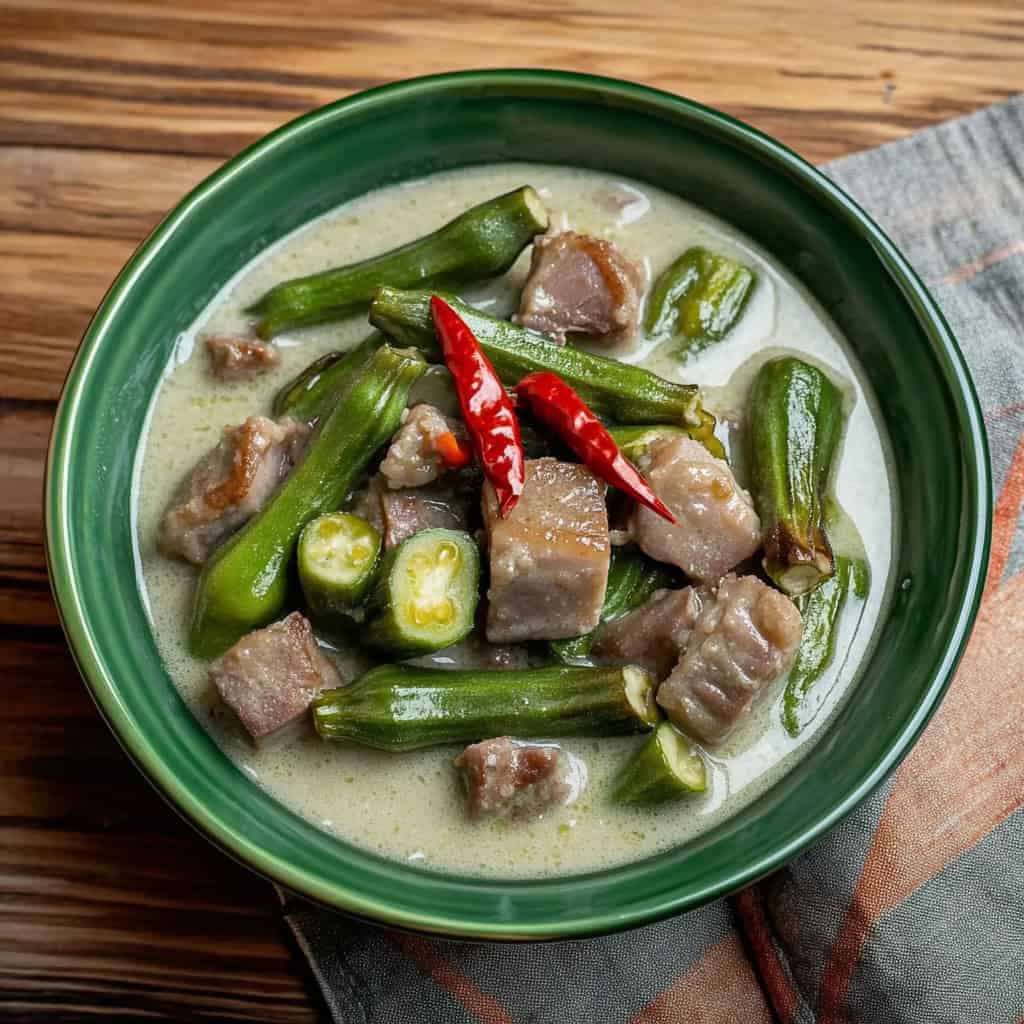
FAQ
Why is my okra slimy?
Okra naturally contains mucilage that creates this texture. It's actually beneficial in this dish as it helps thicken the sauce. To minimize sliminess, avoid overcooking and cutting okra too much before cooking.
Can I use canned coconut milk for this recipe?
Absolutely! While fresh coconut milk provides the best flavor, good-quality canned coconut milk works well. Look for brands without additives or sweeteners.
How spicy is this dish traditionally?
It's moderately spicy by Filipino standards. You can easily adjust the heat level by changing the number of chilies used or removing the seeds.
Can I make this dish ahead for a party?
Yes, it actually tastes better the next day as flavors meld together. Just reheat gently and add fresh garnishes before serving.
How do I know when the pork is tender enough?
The pork should easily break apart when pressed with a fork but still hold its shape. Pork jowl has collagen that needs time to break down for the best texture.
Is there a way to make the sauce thicker without overcooking?
Yes, you can either simmer uncovered for the last 5-10 minutes or add 1-2 okra pods that have been blended with a little water.
What's the best rice to serve with Ginataang Okra?
Freshly steamed jasmine or regular white rice is traditional. The neutral flavor complements the rich, savory sauce perfectly.
Can I add other vegetables to this dish?
Yes! Eggplant, string beans, and squash are excellent additions. Add harder vegetables earlier in the cooking process and more delicate ones with the okra.
Related
Looking for other recipes like this? Try these:
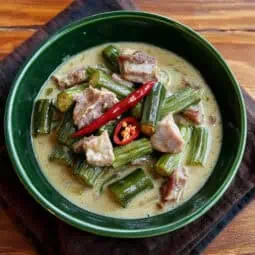
Ginataang Okra (Okra in Coconut Milk)
Equipment
- Large Wok or Deep Pan (kawali) For even heat distribution and proper sautéing
- Sharp knife (kutsilyo) For precise cutting of ingredients
- Wooden spoon (sandok na kahoy) To prevent scratching the pan and for gentle stirring
- Measuring cups and spoons (Panukat) For accurate measurements
- Cutting board (Sangkalan) For safe ingredient preparation
- Lid (takip) For proper simmering and tenderizing
Ingredients
- 400 g pork jowl maskara ng baboy, sliced
- 400 g fresh okra okra, cut diagonally
- 400 ml coconut milk gata ng niyog
- 1 cup water tubig
- 1 tablespoon shrimp paste bagoong alamang
- 6 cloves garlic bawang, minced
- 1 red onion sibuyas, chopped
- Freshly ground black pepper paminta
- 5 pcs finger chilies siling haba, chopped
- 4 pcs red chilies siling labuyo, for garnish
- Salt asin to taste
- Cooking oil mantika
Instructions
- Season the pork jowl pieces generously with salt and black pepper. Heat oil in a wok or large pan over medium-high heat. Once hot, add the pork and brown it on all sides until golden, about 5-7 minutes. Push the browned pork to one side of the wok and add minced garlic and chopped onions to the empty space. Sauté until the garlic is fragrant and onions are translucent, about 2-3 minutes.
- Pour in 1 cup of water and bring everything to a boil. Once boiling, cover the wok, reduce heat to medium-low, and let the pork simmer for 15 minutes until it starts to become tender. After 15 minutes, add the coconut milk, shrimp paste (bagoong), finger chilies, and okra. Gently stir everything together and bring back to a gentle boil.
- Lower the heat to maintain a gentle simmer, cover the wok again, and cook for 8 more minutes until the okra is tender but still bright green and the pork is fully cooked. Taste the sauce and add more salt if needed, then give it a final sprinkle of black pepper. Transfer to a serving bowl and garnish with fresh red chilies. Serve hot with steamed rice.
- For best results, don't overcook the okra – it should be tender but still hold its shape. The sauce should be creamy and slightly thick from the okra's natural texture. If you want the sauce thicker, simmer uncovered for a few extra minutes.
Tips from Lola's Kitchen
- Choose young, bright green okra with no dark spots for best results
- Don't overcook the okra to maintain its texture and nutrients
- Use second-press coconut milk (kakang gata) for a richer sauce
- Toast the bagoong alamang before adding for enhanced flavor
- Cut okra diagonally to expose more surface area for better flavor absorption
Nutrition
The Story Behind Ginataang Okra
Growing up in the Philippines, Ginataang Okra was a dish that told the story of our local ingredients and resourceful cooking traditions. This humble yet flavorful dish emerged from the abundant coconut trees that line our coastal regions and the okra plants that thrive in our tropical climate. While its exact origins aren't documented in Filipino culinary history books, this recipe represents the ingenuity of Filipino home cooks who learned to combine affordable, readily available ingredients into deeply satisfying meals.
In many Filipino households, especially in regions like Bicol where coconut milk-based dishes reign supreme, Ginataang Okra evolved as a practical solution to make vegetables more appealing to children and extend simple ingredients into a complete meal. The addition of pork jowl – a cut that was often overlooked but packed with flavor – shows how our ancestors practiced nose-to-tail cooking long before it became trendy in modern cuisine.
The dish belongs to the broader family of "ginataan" recipes, a cooking technique where ingredients are stewed in coconut milk. This method appears throughout Filipino cuisine, from desserts to savory dishes, but Ginataang Okra stands out for how it transforms the often-misunderstood okra into something crave-worthy. The natural thickening properties of okra, which some might consider a drawback, actually create the signature silky sauce that makes this dish so special.
Today, Ginataang Okra remains a beloved comfort food that perfectly showcases the Filipino talent for balancing flavors and textures. Whether served in humble carinderias (local eateries) or prepared for family meals, it embodies the heart of Filipino cooking – making something extraordinary from ordinary ingredients. The dish has even found its way into modern Filipino fusion cuisine, where chefs are rediscovering and elevating this traditional recipe while keeping its soul intact.
In an era where sustainability and budget-conscious cooking are increasingly important, Ginataang Okra proves that our ancestors were ahead of their time. This recipe doesn't just feed the body; it carries forward the wisdom of Filipino kitchen traditions, teaching us how simple ingredients, treated with respect and understanding, can create something truly memorable.
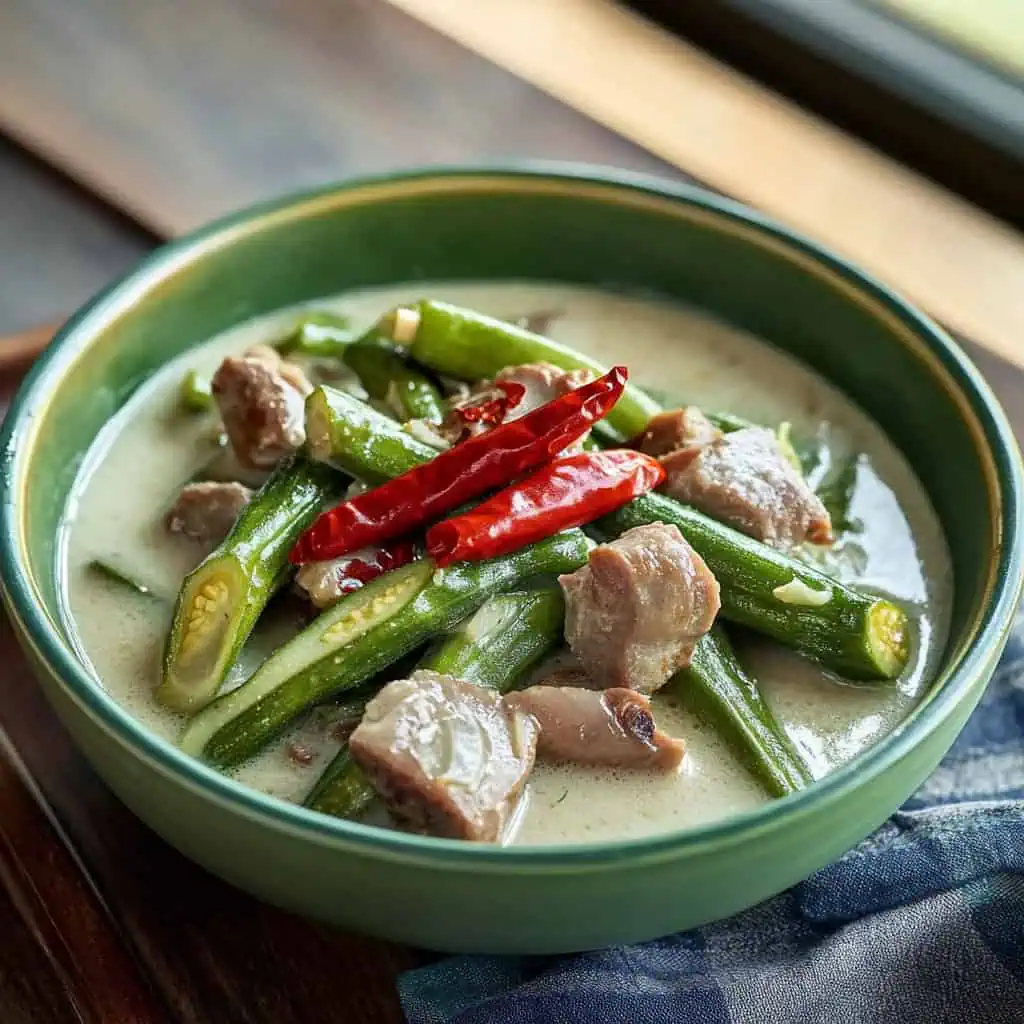





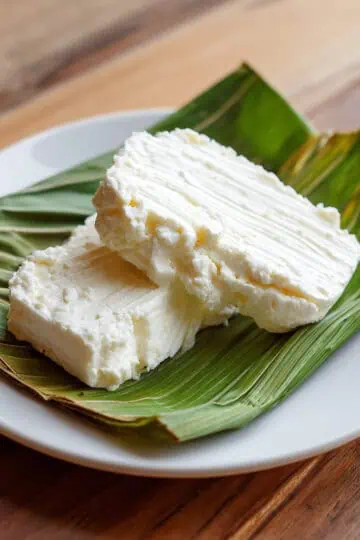
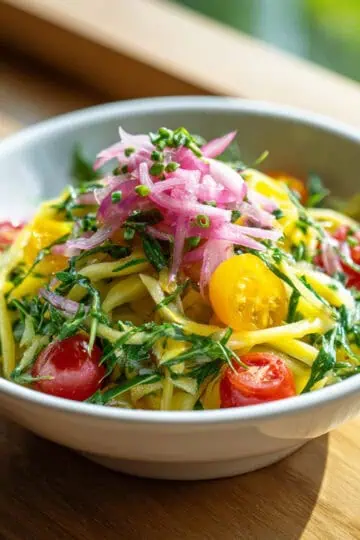
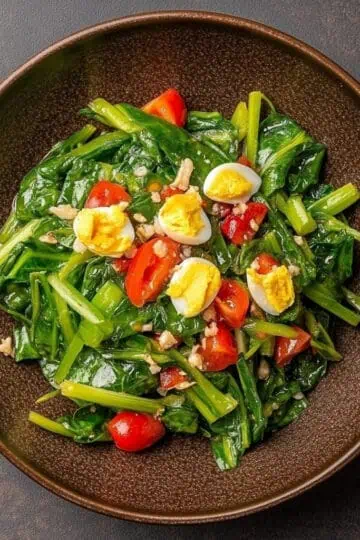

Comments
No Comments